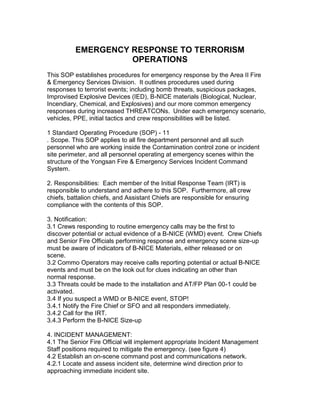This document outlines emergency response procedures for a fire and emergency services division responding to terrorist events. It establishes:
- Procedures for responding to bomb threats, suspicious packages, IEDs, and chemical/biological/radiological/nuclear/explosive materials.
- Personal protective equipment requirements and responsibilities for initial response teams.
- Protocols for incident management, including setting up exclusion zones and decontamination areas.
- Increased response procedures and protective measures for higher threat levels.







